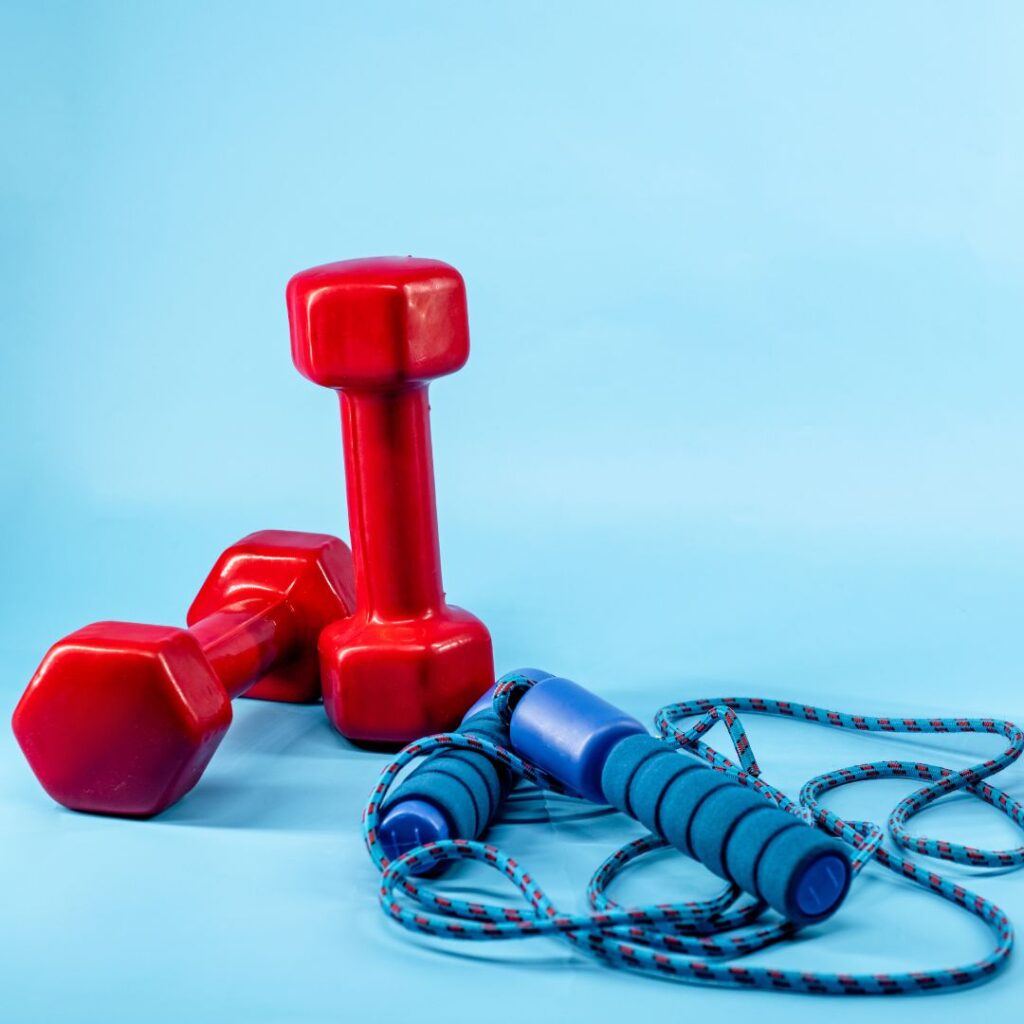
Good shoulder workouts are an essential component of any fitness routine. Not only do they help you build strong and defined shoulders, but they also contribute to overall upper body strength and stability. Whether you’re a bodybuilder, an athlete, or simply someone looking to improve their physique, incorporating shoulder exercises into your training regimen is crucial.
Benefits of strong and defined shoulders
Having strong and defined shoulders goes beyond aesthetic appeal. It plays a vital role in enhancing your overall physical performance and daily activities. Strong shoulders provide a solid foundation for various upper body movements such as lifting, pushing, and pulling. They also improve posture and reduce the risk of injury by stabilizing the surrounding joints.
Furthermore, well-developed shoulders can make you look more confident and attractive. They create an illusion of a smaller waistline and a broader upper body, giving you that coveted V-shaped physique. So, whether you’re hitting the beach or wearing a tailored suit, strong and defined shoulders will undoubtedly make you stand out.
Understanding shoulder anatomy
Before diving into the best shoulder exercises, it’s essential to understand the anatomy of the shoulder. The shoulder is a complex joint composed of several muscles, tendons, and bones. The primary muscles involved in shoulder movements are the deltoids, which are divided into three heads: anterior (front), medial (middle), and posterior (rear).
The anterior deltoid is responsible for shoulder flexion, while the medial deltoid assists in shoulder abduction. The posterior deltoid plays a significant role in shoulder extension. It’s crucial to target all three heads of the deltoids to achieve balanced and well-rounded shoulder development.
Common mistakes to avoid during shoulder workouts
To ensure the effectiveness and safety of your shoulder workouts, it’s crucial to avoid common mistakes that many people make. One of the most common errors is using excessive weight, leading to improper form and increased risk of injury. It’s essential to choose a weight that allows you to maintain proper technique throughout the exercise.
Additionally, neglecting proper warm-up and stretching can also lead to shoulder injuries. The shoulder joint is highly mobile and prone to tightness and imbalances. Therefore, it’s crucial to incorporate shoulder mobility exercises and dynamic stretches into your warm-up routine.
Lastly, overtraining the shoulders without providing adequate rest and recovery can lead to overuse injuries. Like any other muscle group, the shoulders need time to repair and rebuild. Make sure to schedule rest days between workouts and listen to your body’s signals.

What are good shoulder exercises for strengthen
These are 9 good shoulder workouts or exercises that give strength to your shoulder.
1: Shoulder press
The shoulder press is a compound exercise that targets all three heads of the deltoids, as well as the trapezius and triceps muscles. To perform this exercise, start by sitting or standing with a dumbbell or barbell at shoulder height. Press the weight overhead, fully extending your arms, and then lower it back down to the starting position. Ensure that you consistently engage your core and uphold correct form throughout the entire exercise.
2: Lateral raises
Lateral raises primarily target the medial deltoids, helping to develop width and roundness in the shoulders. To execute this workout, position yourself with your feet at a distance equal to the width of your shoulders, grasping a dumbbell in both hands. With a slight bend in your elbows, raise the weights out to the sides until they reach shoulder level. Slowly lower them back down to the starting position, maintaining control throughout the movement.
3: Front raises
Front raises target the anterior deltoids, helping to develop the front portion of the shoulders. To execute this workout, position yourself with your feet at a distance equal to the width of your shoulders, grasping a dumbbell in both hands. With a slight bend in your elbows, lift the weights directly in front of you until they reach shoulder level. Slowly lower them back down to the starting position, keeping your core engaged and maintaining a controlled movement.
4: Upright rows
Upright rows primarily target the lateral deltoids, as well as the trapezius and biceps muscles. To perform this exercise, stand with your feet shoulder-width apart, holding a barbell or dumbbell in front of your thighs. Keeping your elbows higher than your forearms, lift the weights towards your chin, bringing your elbows out to the sides. Lower the weight back to the initial position in a regulated manner.
5: Bent-over lateral raises
Bent-over lateral raises primarily target the rear deltoids, helping to develop the posterior portion of the shoulders. To perform this exercise, stand with your feet hip-width apart, and knees slightly bent. Hold a dumbbell in each hand, hinge forward at the hips, keeping your back straight. With a slight bend in your elbows, raise the weights out to the sides until they reach shoulder level. Lower them down to the starting position with precision.
6: Arnold press
The Arnold press is a compound exercise that targets all three heads of the deltoids, as well as the trapezius and triceps muscles. To perform this exercise, start by holding dumbbells at shoulder height with your palms facing towards you. Press the weights overhead, rotating your palms to face forward as you extend your arms. Switch the movement to replace the starting position.
7: Shrugs
Shrugs primarily target the trapezius muscles, which are essential for shoulder stability and posture. To perform this exercise, stand with your feet shoulder-width apart, holding a dumbbell or barbell in front of your thighs. Lift your shoulders towards your ears, squeezing them at the top of the movement. Lower them back down in a controlled manner, maintaining tension in your traps throughout the exercise.
8: Rear delt flyes
Rear deltflyes isolate the rear deltoids, helping to develop the back portion of the shoulders. Stand with your feet shoulder-width apart and grab a dumbbell in each hand to start this exercise. Lean forward at the hips while maintaining a straight back. Bend your elbows slightly and raise the dumbbells out to the sides until your arms are parallel to the ground. Slowly lower them back down to the starting position, maintaining control throughout the movement.
9: Push-ups
Push-ups are a compound exercise that targets the entire upper body, including the shoulders, chest, and triceps. To perform this exercise, start in a high plank position with your hands slightly wider than shoulder-width apart. Bend your elbows and bring your chest closer to the ground while maintaining a straight body alignment. Push yourself back up to the starting position, maintaining core engagement throughout the movement.
Sample shoulder workout routine
Now that you’re familiar with the best shoulder exercises, let’s put them together into a sample workout routine. Remember to start with a proper warm-up consisting of mobility exercises and dynamic stretches. Perform each exercise with proper form and control, focusing on the mind-muscle connection. Try to do each exercise for 3-4 sets of 8-12 reps. Here’s a sample shoulder workout routine:
- Shoulder press – 3 sets of 10 reps
- Lateral raises – 3 sets of 12 reps
- Front raises – 3 sets of 10 reps
- Upright rows – 3 sets of 12 reps
- Bent-over lateral raises – 3 sets of 10 reps
- Arnold press – 3 sets of 12 reps
- Shrugs – 3 sets of 10 reps
- Rear delt flyes – 3 sets of 12 reps
- Push-ups – 3 sets of 10 reps
Tips for maximizing your shoulder workouts
To ensure maximum results from your shoulder workouts, here are some additional tips to keep in mind:
- Focus on proper form: Maintain proper technique throughout each exercise to target the intended muscles and prevent injury.
- Progressive overload: Gradually increase the weight or resistance to continually challenge your muscles and stimulate growth.
- Variety is key: Incorporate different shoulder exercises and variations to target all angles of the deltoids for well-rounded development.
- Mind-muscle connection: Focus on contracting and squeezing the shoulder muscles during each repetition to maximize muscle activation.
- Rest and recovery: Allow adequate rest and recovery between workouts to give your muscles time to repair and grow stronger.
Shoulder workout equipment and accessories
While many shoulder exercises can be performed with just bodyweight or basic equipment, certain tools and accessories can enhance your shoulder workouts. Here are some options to consider:
- Dumbbells: Versatile and effective for a wide range of shoulder exercises.
- Barbells: Ideal for compound movements like shoulder presses and upright rows.
- Resistance bands: Provide variable resistance and can be used for added challenge or assistance during exercises.
- Kettlebells: These can be used for dynamic movements like kettlebell swings or single-arm presses.
- Shoulder resistance bands: Specifically designed to target the shoulders and improve mobility and strength.
Remember to choose equipment and accessories that align with your fitness level and goals.

How to prevent shoulder injuries during workouts
Preventing shoulder injuries is crucial for maintaining long-term shoulder health and enjoying productive workouts. Here are a few pointers to keep in mind to avoid shoulder injuries:
- Warm-up and stretching: Prioritize a thorough warm-up that includes shoulder mobility exercises and dynamic stretches.
- Start with lighter weights: Begin with lighter weights to ensure proper form and technique before gradually increasing the load.
- Avoid excessive range of motion: Do not force your shoulders into uncomfortable or excessive ranges of motion, especially when using weights.
- Listen to your body: Pay attention to any pain, discomfort, or signs of overuse. Rest, modify exercises, or seek professional guidance if necessary.
- Incorporate shoulder mobility exercises: Regularly include exercises that improve shoulder mobility and stability to reduce the risk of injury.
Remember, injury prevention should always be a priority over pushing yourself beyond your limits.
Conclusion: Achieving strong and defined shoulders
Incorporating shoulder workouts into your fitness routine is crucial for developing strong, defined, and well-rounded shoulders. The nine exercises mentioned in this article, along with the sample workout routine and helpful tips, provide a comprehensive approach to shoulder training.
Remember to prioritize proper form, progressive overload, and adequate rest and recovery for optimal results. And don’t forget to listen to your body and adjust your workouts as needed to prevent injuries.
By following these guidelines, you’ll be well on your way to achieving the strong and defined shoulders you’ve always desired. So, get ready to rock those sleeveless tops and confidently tackle any physical challenge that comes your way!
CTA: Start incorporating these shoulder exercises into your training routine today and witness the incredible results for yourself. Strong and defined shoulders await you!





YEAH! It’s also be the good idea. Thanks for this kindness